At-home activities
Point Pelee National Park
Flock to Point Pelee National Park from the comfort of your own home! Try one of these at-home activities and learn something new about the most southern point of mainland Canada.
Backyard birding
Selecting the Best Bird Houses, Feeders, and Seed
Transcript
"Backyard Bird Feeders" by Pascale Gerdun, South-Western Ontario Field Unit.
[Pascale] Hello everyone! I’m Pascale, an interpreter from Point Pelee National Park. You can usually find me at the Visitor Centre or leading education programs, but since we are all doing our part to stay home and flatten the curve, today you’re joining me in my very own backyard. While we're all practicing physical distancing, now is the time to enjoy our green spaces at home! And while I have been enjoying my own backyard, I couldn’t help but wonder how I could attract more birds! Since I am going through the planning process myself, for today’s video I will be sharing a few tricks on selecting the best bird houses, feeders, and seeds for you. With a few tips you can plan to make the most of backyard or balcony and turn it into a bird sanctuary for your neighborhood species. I’ve found that choosing a bird feeder can be a little overwhelming at times, especially with so many different options available. That being said, there are a few general guidelines that make things a little bit easier. Remember no matter the bird feeder you select, it should be durable and easy to clean. Tube feeders are a good first feeder. They’re easier to squirrel proof since you can hang them from a pole or a branch and with lots of different sizes to choose from, you can often have multiple feeding ports and spot more than one bird eating at a time. Tube feeders are generally easy to clean and fill, and are a favourite of finches and other small birds. Hopper feeders are accessible for birds of all different sizes, including cardinals, because they tend to have more room to perch. Hopper feeders do hold a lot of seed, which is nice because it means you have to replace it less frequently but the larger perches also mean easier access for squirrels. But hey, if you’re looking to attract all sorts of critters to your yard, this might be the feeder for you! You can actually find specific hopper feeders that are weighted so that squirrels can access the seed. Nectar feeders come in many different styles, but tend to attract hummingbirds and orioles. When you’re choosing a nectar feeder look for something with brightly colored nectaring parts. Avoid using coloured nectar, though, especially those containing red dyes. You can actually make your own nectar for the feeder by combining one-part sugar and four parts water and boiling until it’s dissolved. Once it’s cool, add it to the feeder or store it in the fridge for up to two weeks. One thing to keep in mind, though, when selecting nectaring feeders is that they do require frequent cleaning, especially in the summer months. Suet feeders are important for supplying birds with healthy and important fat during the winter, but they can be used all year long. Suet is a good substitute for birds who enjoy insects, like woodpeckers! Where you can purchase suet cakes or feeders at the store, you can also make your own. In fact, making your own suet birdfeeder can be a really fun activity and only requires a few simple ingredients that can be purchased with your other essential groceries. I've actually made my own as an example. All you need is some sort or suet, lard or shortening, birdseed, twine, and a container or mold of some kind. Start by preparing your mold. Wether it's an old yogurt contatiner, or a paper cup, pierce a hole at the bottom and thread a piece of twine through it. Then tie off the piece of twine as this will serve as your hanger. Melt your fat over the stove or in the microwave and once it’s melted, stir in the birdseed and pour the mixture into the prepared container. Make sure the twine is sticking out the top! Pop it in the fridge for at least an hour to harden, and once it’s ready remove it from the container. Find a shady place in your backyard to hang it, and wait for the birds to arrive! Now that you have an idea of the type of birdfeeder that might work for you, it’s time to select the seed! There are a variety of feeder fillings, and like the feeders themselves, each can attract different types of birds. In the resources attached to this video you can find this handy chart that shows the best types of food source for specific types of backyard birds. Take a look at the resources and decide which seeds you might want in your backyard! Once you select your seed, remember to store it in a cool dry place. Large plastic containers are great for holding a large bag of bird seed while keeping other critters, like mice, at bay. Now that we know a little bit more about bird feeders and seed, I want to learn more about bird houses. It’s time to ask an expert for a little more information. I’ve reached out to Sarah, a Point Pelee birding expert and Promotions Officer, to learn more! Sarah, what can you share with us about choosing a bird house for our yard or balcony? [Sarah] A bird house is a great way to provide nesting habitat for different species of birds, depending on where you live. If you're near an open grassy area, you might find Eastern Bluebirds or Tree Swallows investigating your nest box, while in a more urban area, you're more likely to see something like a House Sparrow or a House Wren. One of the most important things to consider when selecting your nesting box is the size of the hole. This is a great resource to discover what types of birds might be in which area and what size hole you’ll need to attract them. It's also important to make sure that you can open your box up and clean it seasonally. Sometimes you'll have little critters, like mice, spending the winter in your nest box. If you install your nest box on a pole, please be sure to add a baffle to help prevent predators getting into your box.
Then, sit back and observe all the activity around your box. [Pascale] Do you have any more tips to help us transform our backyards into birding sanctuaries? [Sarah] Well one thing we don't always consider is having a source of water. depending on where you live. it could be a bird bath, or a pond, but water is really important and will definitely attract more birds and other wildlife to your yard. Just be sure that your water source doesn’t get stagnant; so either use a pump, or clean it out frequently. [Pascale] Thank you Sarah! It's great to hear from an expert on this. I know that at Point Pelee National Park we have a few bird houses of our own. Joining us now is Kaylie from the resource conservation department in the park. [Kaylie] We do have bird houses in the park, and they are part of our prothonotary warbler monitoring program. A prothonotary warbler is a beautiful yellow and blue insectivore warbler species. In order to facilitate prothonotary breeding, resources conservation staff in collaboration with bird studies Canada have installed 11 artificial nest boxes along the Woodland Nature Trail in the swamp forest habitat. The monitoring program aims to track breeding occurrences and successes in the park in both artificial and natural nest cavities with the goal of improving habitat for this species at risk. Prothonotary warblers are listed as endangered, with the Canadian population estimated around 30 individuals. This species is threatened by habitat degradation caused by invasive insects and plants, as well as loss of wetland habitat. Point Pelee national park is home to an estimated one to three breeding pairs occurring in the park’s swamp forest each year. [Pascale] Thank you Kaylie! I know that throughout this process I’ve learned quite a bit and I hope that you've learned something too! While we’re working to flatten the curve, this is our chance to take advantage of our backyards and green spaces at home. I know that I’m looking forward to seeing what my bird feeder can bring to my yard! If you enjoyed this video, feel free to comment with your own pictures or videos of your bird feeders, houses, or sightings. We are all in this together, and sharing our experiences is what keeps us all connected in times like these. From my backyard, to yours, thank you for joining me. Stay home, stay safe, stay healthy.
Credits:
Parks Canada logo.
© Her Majesty the Queen in Right of Canada, represented by Parks Canada, 2010.
Canada wordmark.
Learn which bird feeder and bird seed is best for your space:
Choosing the right box
Depending on where you live, you might find different species looking to nest in your green space. Here is a handy chart with many of the species commonly found in this area with their preferred habitats and nesting box hole sizes.
Box requirements
| Bird Species | Habitat | Hole Size |
|---|---|---|
| American Kestrel | Open areas like orchards, fields, meadows | 7.5-8 cm |
| Black-capped Chickadee | Forested lots, yards with hardwood trees, meadows | 2-3 cm |
| Eastern Bluebird | Open areas with little round cover like orchards, fields, lawn | 3.5-4 cm |
| Eastern Screech-Owl | Forest areas and edges | 7.5-8 cm |
| European Starling | Varied range of habitats, from urban to rural areas | 4 cm |
| Flycatcher | Forest edges, woodlots with mixed deciduous trees | 4.5 cm |
| Northern Flicker | Clearings, forest edges, pastures, urban parks | 6.5 cm |
| Nuthatches | Pine-hardwood forest, forest edges, cypress swamps | 2.5 cm |
| Sparrow | Suburban areas (parks, gardens, backyards), urban, and agricultural areas | 3.5 cm |
| Tree swallow | Open areas near wetlands, marshes, or swamp. | 3.5 cm |
| Wood duck | Forested area near wetlands, ponds, marshes, or swamps. | 10 x 7.5 cm |
| Wrens | Woodland area, open forest with thick underbrush, suburban neighborhood gardens or backyards |
3-4 cm round 1.2 x 13 cm slot |
Choosing the right food
Knowing what kinds of birds you would like to find in your yard will tell you what kind of feed you should by. Here is a handy chart with many of the species commonly found in this area and their food preferences.
Food
| Bird Species | Black oil sunflower | Striped sunflower | Cracked corn | Thistle (Niger) | Millet | Suet | Peanuts | Fruit | Sugar Water Nectar |
|---|---|---|---|---|---|---|---|---|---|
| Indigo Bunting | Yes | Yes | - | Yes | - | - | - | - | - |
| Northern Cardinal | Yes | Yes | - | - | - | Yes | Yes | Yes | - |
| Grey Catbird | - | - | - | - | - | Yes | - | - | - |
| Black-capped Chickadee | Yes | Yes | - | - | - | Yes | Yes | - | - |
| Mourning Dove | - | - | Yes | - | Yes | - | - | - | - |
| American Goldfinch | Yes | - | - | Yes | - | - | - | - | - |
| Evening Grosbeak | Yes | Yes | - | - | - | Yes | - | - | - |
| Rose-breasted Grosbeak | Yes | Yes | - | - | - | - | - | - | - |
| Ruby-throated Hummingbird | - | - | - | - | - | - | - | - | Yes |
| Blue Jay | Yes | Yes | Yes | - | - | Yes | Yes | - | - |
| Dark-eyed Junco | Yes | - | Yes | - | - | Yes | - | - | - |
| Northern Mockingbird | - | - | - | - | - | Yes | - | - | - |
| Nuthatches | - | - | - | - | - | Yes | Yes | - | - |
| Baltimore Oriole | - | - | - | - | - | - | - | Yes | Yes |
| Pine Siskin | Yes | - | - | Yes | - | - | - | - | - |
| House Finch | Yes | Yes | - | Yes | - | - | - | - | - |
| Red-winged Blackbird | - | - | Yes | - | - | - | - | - | - |
| Sparrows | Yes | - | Yes | - | Yes | - | - | - | - |
| American Robin | - | - | - | - | - | Yes | - | Yes | - |
| Woodpeckers | - | - | - | - | - | - | Yes | Yes | - |
| Wrens | - | - | - | - | - | - | Yes | - | - |
Activities
Point Pelee Bingo!
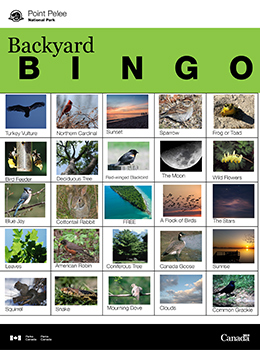
How many squares can you check off? Use this bingo card in your own backyard for even more fun.
(PDF, 1.7 Mb)
Activity sheets
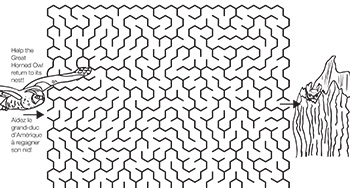
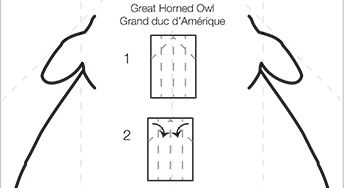
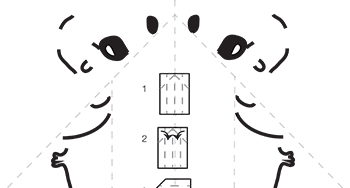


Turkey Vulture colouring sheet (PDF, 683 Kb)

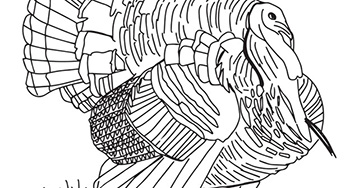
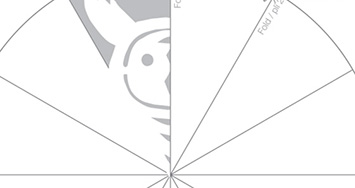

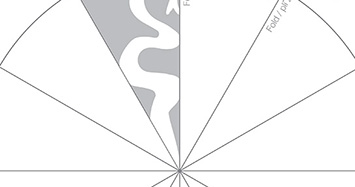
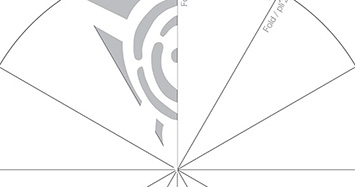
Related links
- Calendar of events
- Red chairs
- Art at the oTENTiks - Invitation to Vendors
- Artist-in-Residence
- Bicycling
- Bird watching
- Canoeing and kayaking
- Dark sky nights
- Photography
- Picnicking
- Self-guided interpretive programs
- Shuttle to the Tip
- Camping and overnight accommodation
- Swimming
- Trails
- Festival of Birds
- Date modified :
